World
How Will History Judge Obama? Psychology May Score Over Cold Data Here
Ram Prasad
Jan 31, 2017, 06:28 PM | Updated 06:28 PM IST
Save & read from anywhere!
Bookmark stories for easy access on any device or the Swarajya app.
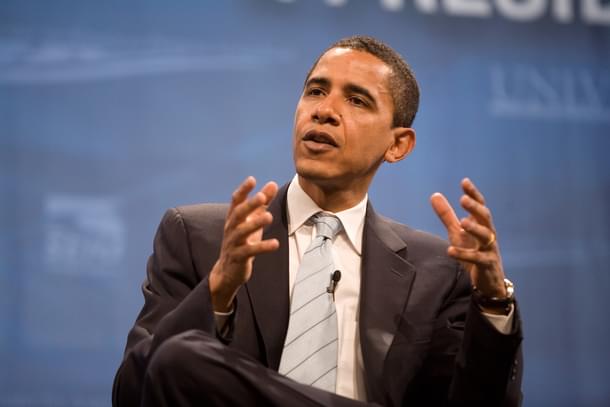
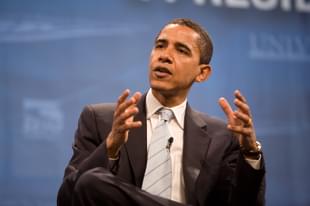
How high do you think Obama's approval ratings are?
65 per cent? 60 per cent ? 55 per cent ?
And how do you think he compares to other presidents in the modern era? Chances are most people think that when it comes to approval ratings, he did really well. I thought so too.
What if in reality, his approval ratings aren’t that good and that in fact his ratings are lower than that of George W. Bush? Yes, the one who was mocked daily, the one who peddled falsehoods about Weapons of Mass Destruction ( WMDs)s and started a war. Shocked? It gets worse. Obama’s ratings are lower than that of President Nixon. Yes, the one who almost got impeached. This is not fake news. For the record, I happen to like Obama.
These are numbers as per Gallup Poll, the most authoritative & credible source when it comes to job approval ratings.
But how is this possible ? We remember that as 2016 elections were coming to a close, his ratings were more than 60 per cent and people were screaming “4 more years”.
This sense of bewilderment is because we were too focused on the approval ratings at that moment. A Presidency cannot be judged by ratings on one particular day or a month.
Let’s pull back and see the average approval ratings that tell a very different story.
Here are the average job approval ratings for all the US presidents in the modern era.
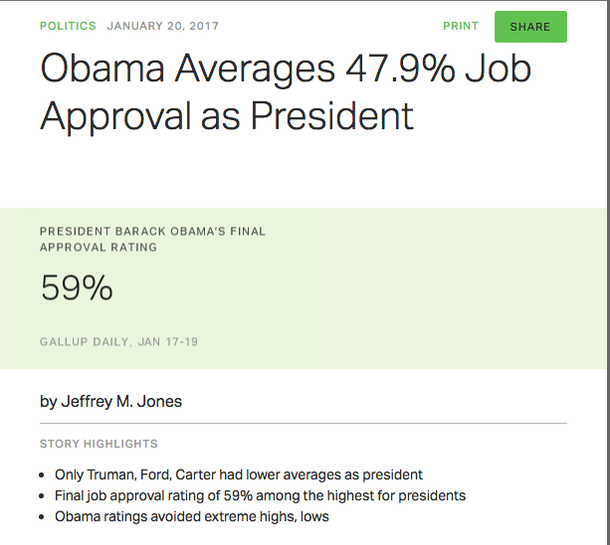
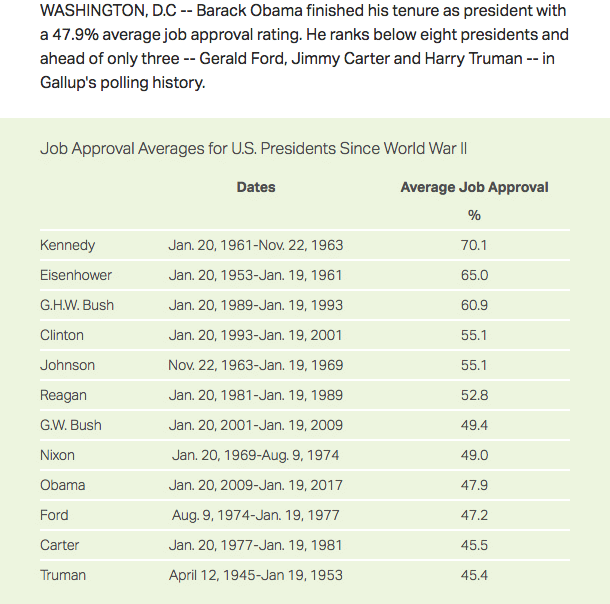
You will see that only Ford, Carter and Truman did worse. All this seems unreal even for those who don’t approve of Obama. Why do we then carry this belief that he has high approval ratings in spite of the number being 47.9 per cent, which is quite low?
There is a perfectly good explanation, thanks to the works of Nobel Prize winner & Behavioral Economist Daniel Kahneman, et al. It’s called the Peak–End rule. It is a heuristic (mental shortcut) where we judge experiences largely based on how they felt at their peak, as in their most intense point and how they end. We do not judge experiences, pleasant or unpleasant, by total sum or average. We also tend to ignore the duration.
In simple terms, we remember the peaks and the end. How it ends makes a big impact, hence the adage, “all’s well that ends well”. In some ways, this can be called recency bias. Everyone who has gone through a performance appraisal can relate to this.
Here are some simple examples
In a 1996 study, Kahneman and Redelmeier assessed patients' assessment of uncomfortable colonoscopies. They correlated the remembered experience with real-time findings. The study found that patients consistently evaluated the discomfort of the experience based on the intensity of pain at the worst (peak) and final (end) moments. Length of the procedure did not make a difference. People simply judged the procedure by how bad it was at its most intense moment and how it ended. In fact in the study, they deliberately induced lower pain once the procedure was over. Participants rated that as a less painful procedure. So, we remember a colonoscopy to be less painful if it induces lower pain once after the process is over.
In his book Predictably Irrational, Dan Ariely talks about his experience when he was in the hospital as a burns victim. What's the best way for a nurse to remove bandages he asks ? It is widely believed that the best way to pull off a bandage is to rip it off quickly, cutting down the duration of pain. Ariely later did some research and found out that the opposite is true: “People would rather endure a lower amount of pain for a longer period time than a very high amount of pain for a shorter time”
These two examples illustrate that the averages matter a lot less when it comes to our judgment of experiences. Please bear in mind that this holds true for both pleasant and unpleasant experiences.
So, in Obama’s case, what are the most memorable moments of his Presidency? If we take both positive and negative developments, the peak was taking out Osama Bin Laden. He was a most wanted terrorist and the mastermind of the worst terrorist attack on American soil. Obama’s approval ratings jumped 6 points on account of Laden’s death, from 46 per cent to 52 per cent. Obama went to town, rightfully so, with that achievement & who doesn’t remember this picture ?
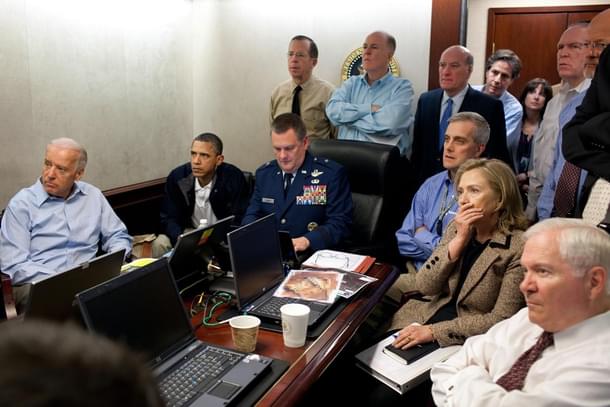
2016 saw one of the most bitterly fought presidential campaigns. Donald Trump and Hillary Clinton had very high unfavorable ratings. People couldn’t wait for the campaign to get over. In the event, Obama’s approval ratings shot up towards the close of the campaign. Wherever he went, people shouted “4 more years”.
Here are the quarterly job approval ratings of President Obama during his two terms
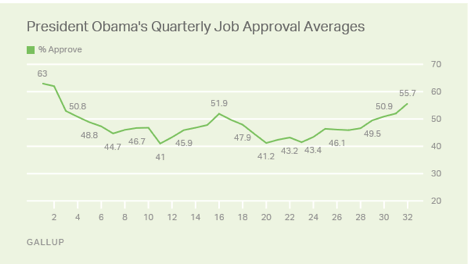
He started with a bang. His victory was unprecedented in many ways. The victory speech is etched in memory because of it’s historical nature. He then saw a spike in ratings after the killing of Osama Bin Laden. In terms of lows, there weren’t that many unpleasant moments at a national level. Sure, there were some horrific shootings, some of the worst in American history but they were not attributed to the President. To be fair to Obama, his decisions pulled US out of a recession and the unemployment rate is remarkably low when he has left office.
So, how will people remember him? As a President who didn’t get the job done, a President worse than his 4 predecessors and even Nixon? Considering my strong conviction in Behavioral Economics, I believe psychology will score over data on this one. The Peak - End rule should hold unless President Trump knocks it out of the park and makes America great again.
If you have further interest, I recommend this TED Talk by Daniel Kahneman. It is one of my favourites.





